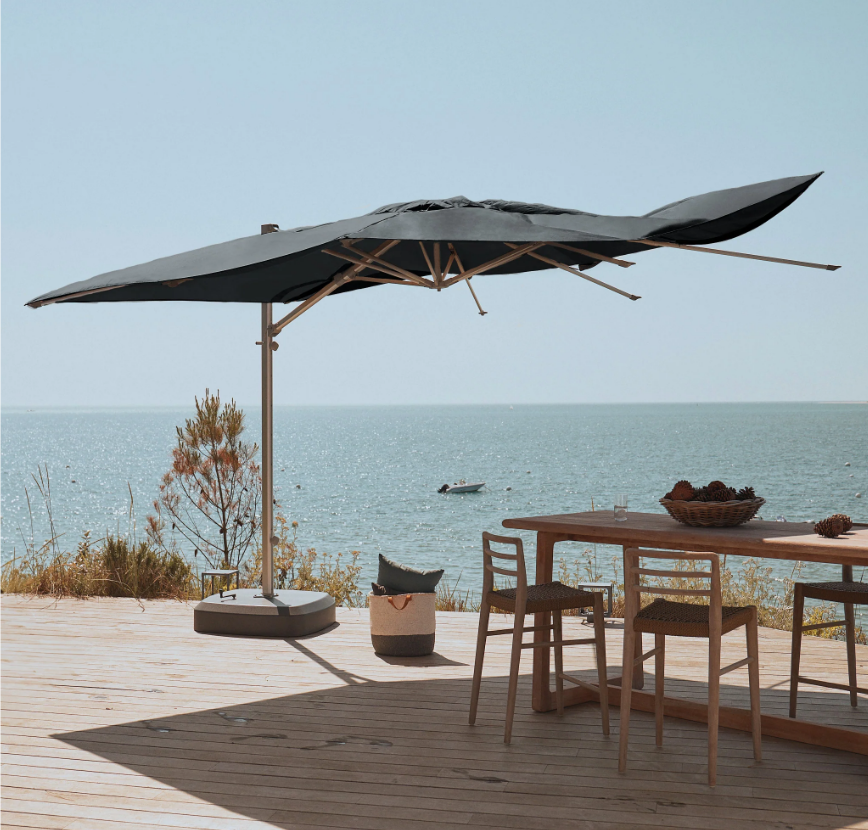💨How BELVEO answer to your problematic?Updated 2 years ago
1️⃣ "Ascending" wind: wind carrying air from the bottom to the top.
The impact on classic parasols on the market: the parasol flies away, the canopy tears, the parasol ribs twist and break (like on an umbrella)...
Belveo®'s solution: thanks to the flexible fiberglass ribs integrated into the fabric (patented system), the parasol can adapt its grip to the wind in real time and without human intervention: the canopy is flared above the structure, and the parasol does not fly away !

2️⃣ "Flapping" wind: wind carrying air from the top to the bottom.
The impact on classic parasols on the market: the parasol ribs break, the pole bends, the canopy tears...
BELVEO®'s solution: All our parasols are equipped with reinforced ribs and poles. The ribs do not break, the poles do not bend.
Warning:
Belveo® parasols are designed to withstand strong winds and are much stronger than most parasols on the market, but unfortunately they are not unbreakable. It is up to you to remain vigilant if the parasol does not behave as expected, for example in a very irregular wind.
Other important information:
Belveo® parasols with central poles are more stable in the wind than Belveo® cantilever parasols. This is because parasols with offset poles can sway more easily than parasols with central poles.
That's why we recommend a smaller fabric size if you are in a very windy area and want to use your parasol as often as possible